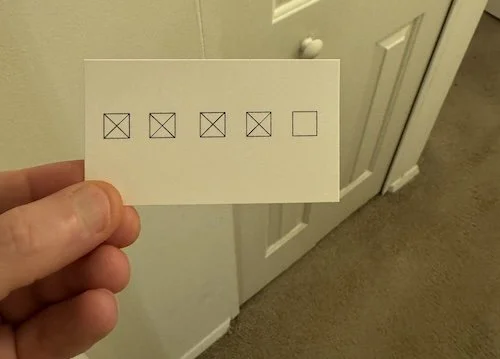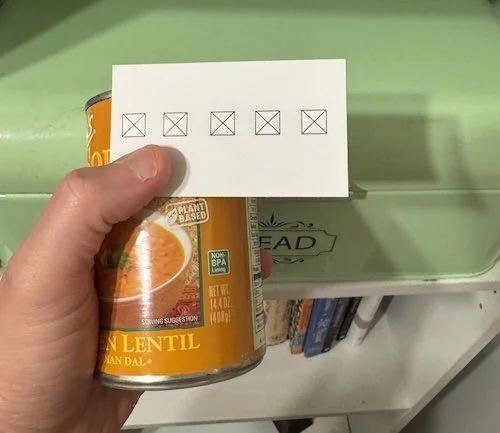Until August...
/This is the final post for July. Regular posting will resume Monday, August 4th. The newsletter for subscribers will be sent out Sunday, August 3rd. And a new playlist will be sent out to those who signed up for The Juxe near the end of the month.
Thanks to those of you who wrote in to express your gratitude for the Will It Unfold? broadcast.
I take great pride in being able to put together something that actually raised the bar for magic video content.
You’re welcome.
Marc Kerstein just added a new functionality to the DFBX app that allows for something similar to the Damsel List Shortcut mentioned in The Box post.
Previously, DFB would insert your force item at the named number—so the list itself was static, and the app would just wedge your force item into the right spot. This is something I actually took advantage of in this trick.
This new option does something different.
Imagine your force item is already part of the list, at number 1. What the app does is “cut” the list (and complete the cut), so your force item lands at the named number. That means the items that were originally at positions 2 and 100 are now sandwiching your force item—everything stays in the same relative order.
Now, imagine your force item is already part of the list, sitting at position 1. What the app does is “cut” the list (and complete the cut), so your force item lands at the desired number. That means the items that were originally at positions 2 and 100 are now sandwiching your force item.
But it’s more than that. Now, everything in your list is in the same position relative to the force item as it was originally.
As mentioned, this allows you to do Damsel-style forcing, like in The Box effect.
This can also be used to boost the impossibility of any small multiple-out style of effect. Instead of saying, “Think of any one of these six items,” you tell them to roll a die in their head and remember the number. Then they call someone you don’t know, who names a random two-digit number. They add their imaginary roll to that number.
“We have a list you haven’t seen. A starting point named by someone I don’t know who’s not even in the room. And a final number that only exists in your head. It’s like a triple-blind experiment.”
Without ever saying their final number, they land in your bank of six outs—hidden inside a list of 100 items. It feels dramatically more impossible than, “Think of one of these six things.” But in the end, it’s functionally the same trick.
I mentioned Justin Flom’s Instagram posts where the premise is that his daughters are left alone to “explore” his tricks. I hadn’t seen this one, and it might be the best, primarily due to the reactions of people who thought… I’m not sure what they thought. Justin has a real guillotine in his home? That he really left his daughters with a real guillotine? That any of these skits they see on social media are real?
He should have done a follow-up video. “We took your advice and got her checked and got terrible news. Apparently, her head was in fact chopped off by that guillotine. The doctor’s say she won’t be able to wear scarves ever again.” Then do a scarf-thru-neck trick to show the terrible repercussions of his negligent parenting.
bye, bye. See you back here in August.












